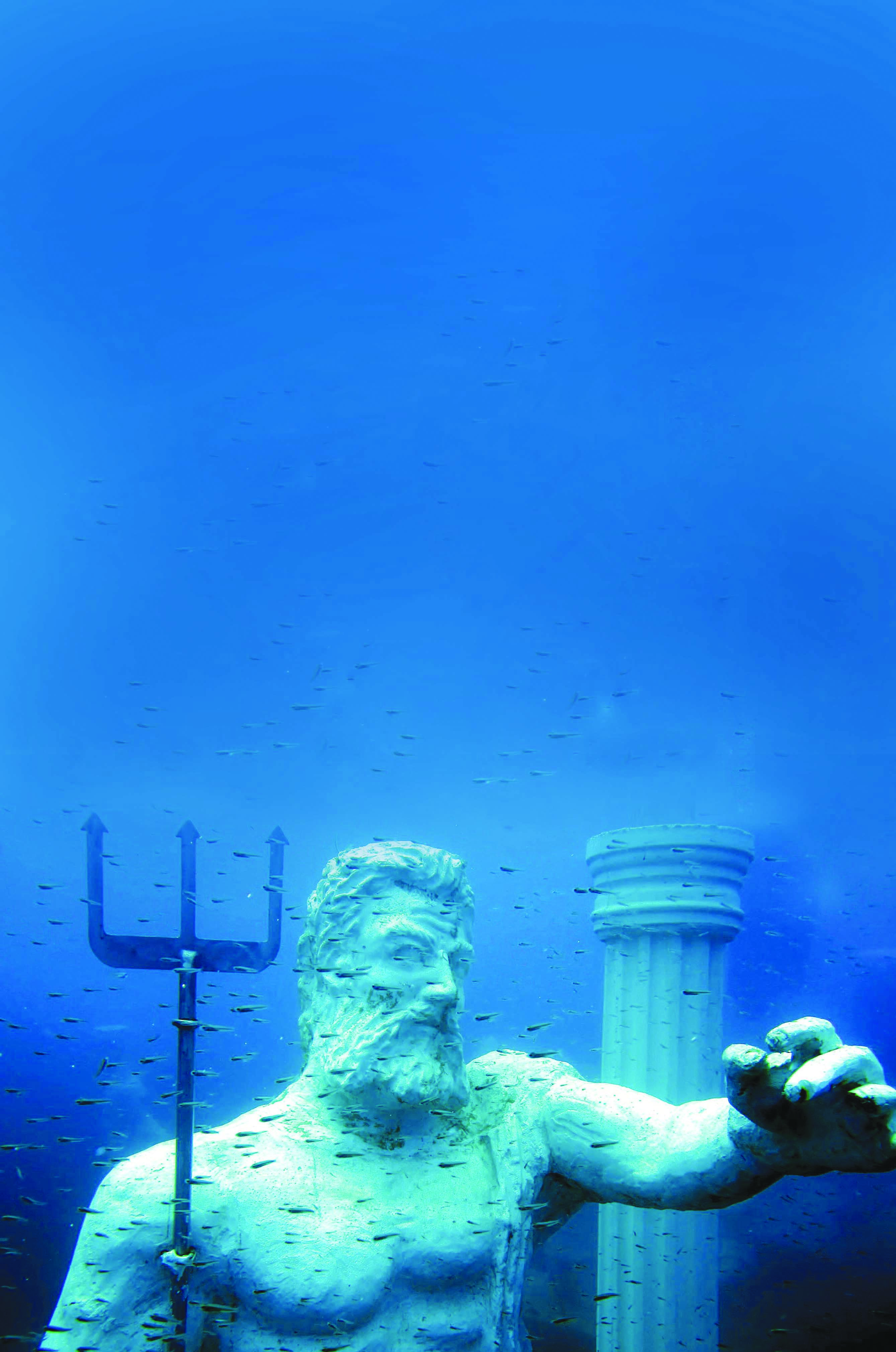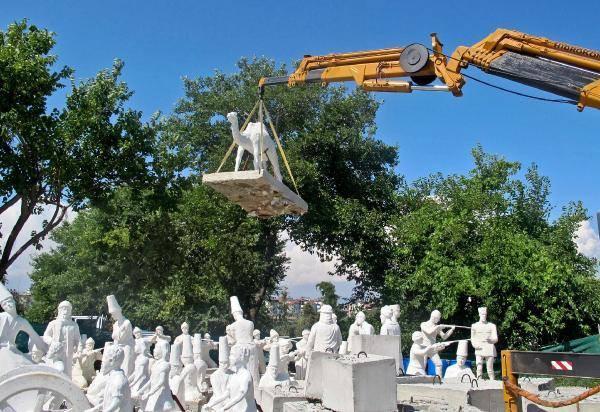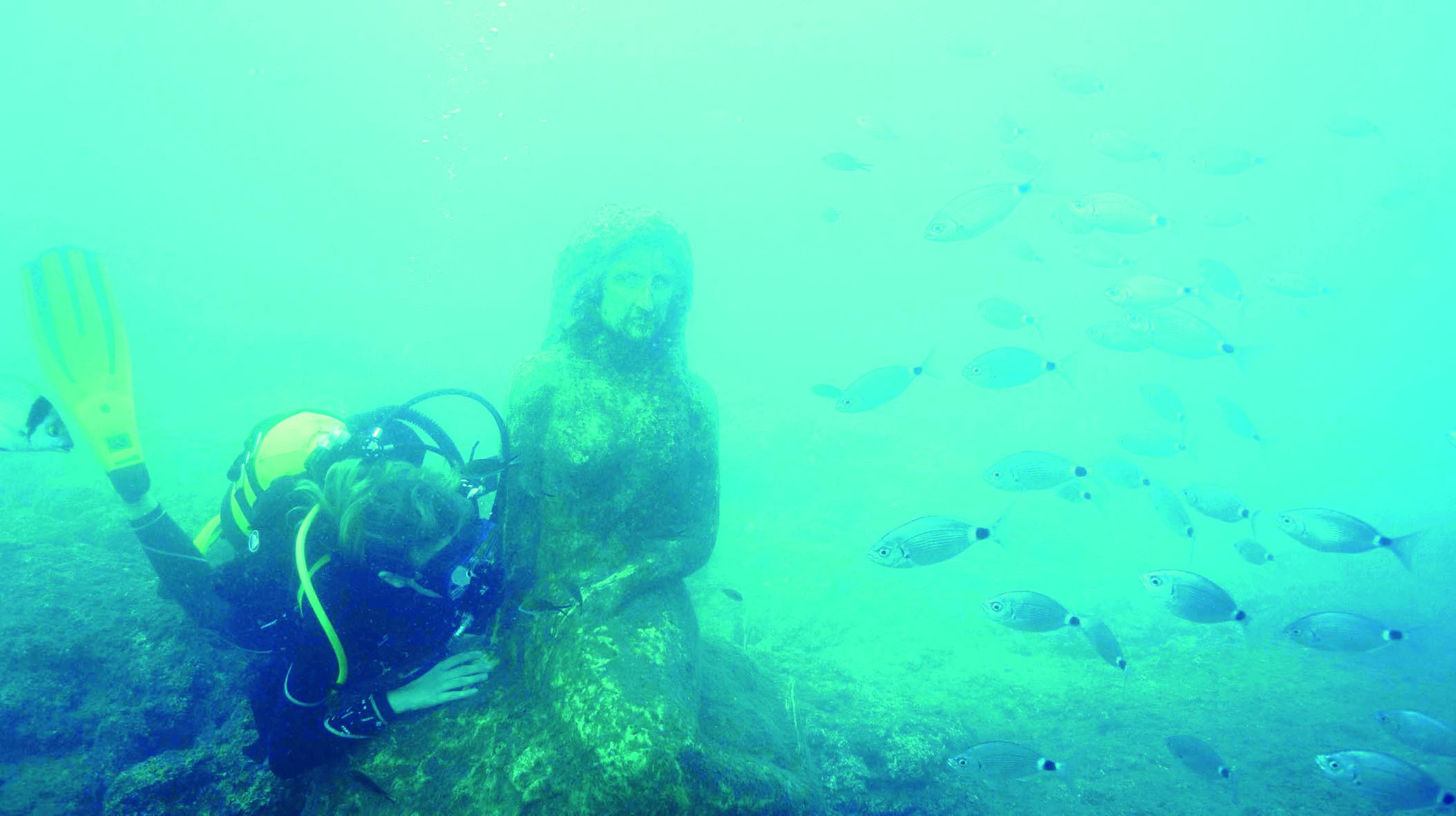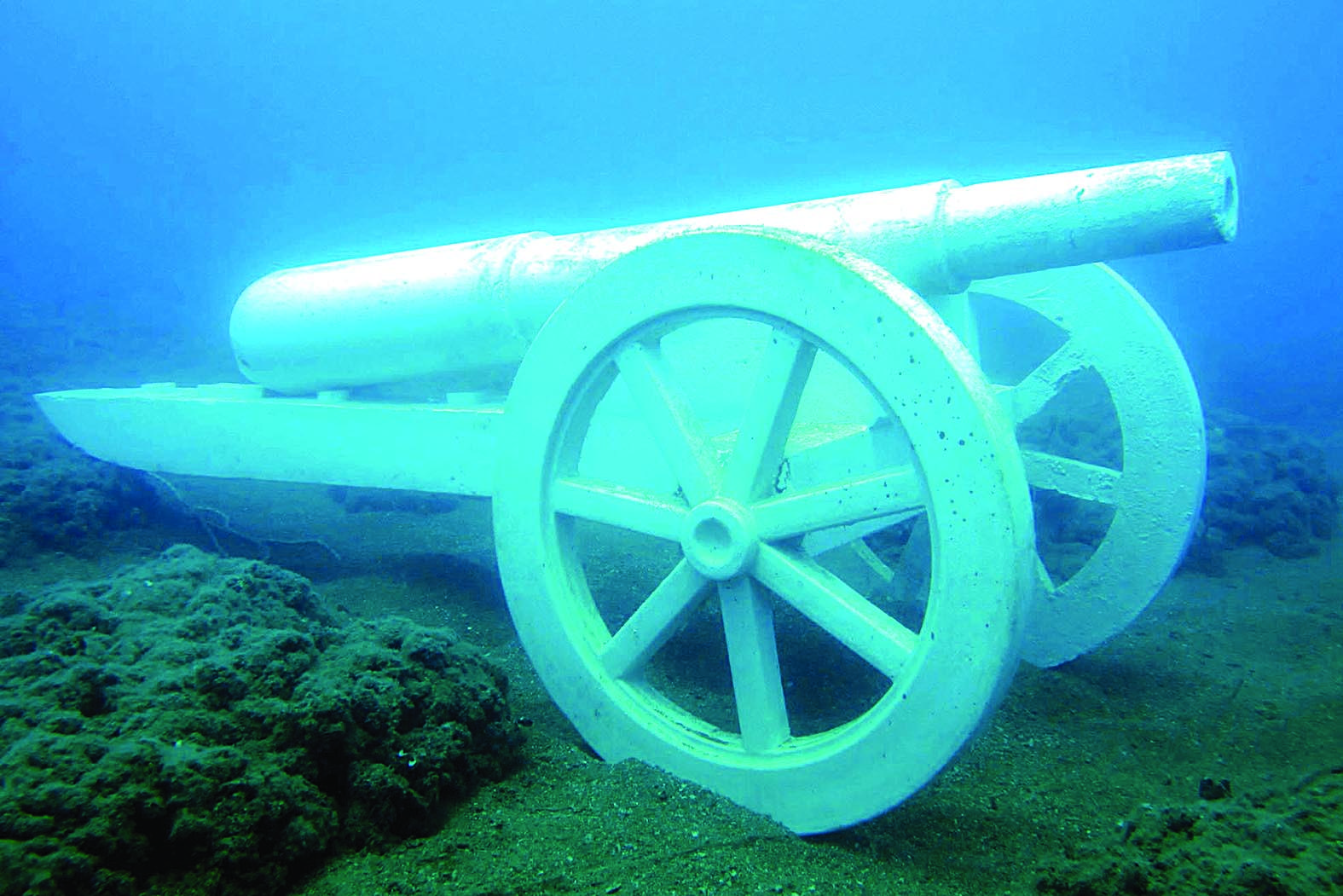Turkey’s first underwater museum opens in Side
ANTALYA

The Side Underwater Museum is the first and only one of its kind in Turkey and Europe. The biggest underwater museum is n Mexico, Cancun.
Taking a pioneering step for both Turkey and the European continent, cultural and trade officials in the southern district of Side have cut the ribbon on a new underwater museum on the Mediterranean.

The Side Underwater Museum, which was constructed by the chamber of Maritime Trade Antalya Branch (IMEAK), officially opened over the weekend in Antalya’s Manavgat district with 110 sculptures.
IMRAK Chairman İnanç Kendiroğlu said the sculptures that featured the richness of Anatolian civilization had been finished in just nine months and placed underwater in Side.
The museum is the first and only one of its kind in Turkey and Europe, Kendiroğlu said, adding that they were planning to improve diving tourism and open underwater museums in Kemer, Alanya and the Antalya provincial center in the coming years.
Kendiroğlu said the sculptures had been designed to avoiding damaging the natural environment underwater.
“We have realized a very nice project. The world’s biggest underwater museum is in Cancun, Mexico. There are 3 million tourists in the world who are actively involved in diving tourism. The museum has five main themes. This year 30,000 people visited the museum. Our goal is to draw 500,000 people annually at first and then 1 million. There is a real increase in underwater tourism. We believe that we can get very nice tourism income from this sector,” he said.
Kendiroğlu said the area of the underwater museum was closed to sea traffic, adding that everyone holding a certificate could dive there for free.
The owner of Side Silver Diving School, Ahmet Gülaydın, said diving tourism had increased by 30 percent in Side after the opening of his school, adding that they had first promoted the museum in Germany, the Netherlands and Belgium. “Diving tourists mostly choose Mexico, Egypt, New Zealand, India and Turkey,” he added.
Art and environmental science
The museum aims to demonstrate the interaction between art and environmental science and form a complex reef structure for marine life to colonize, inhabit and increase biomass on a grand scale.
Under several historical and cultural themes ranging from the “Turkish War of Independence” to “Whirling Dervishes,” “Camel Trains” and “Flower Gardens,” 110 sculptures are now on display under the Mediterranean waters. The sculptures were constructed from specialized materials used to foster coral life.
The sculptures were lowered into place at three different depth zones that will be accessible to all divers, whether amateur, semi-professional or professional.

 The Side Underwater Museum, which was constructed by the chamber of Maritime Trade Antalya Branch (IMEAK), officially opened over the weekend in Antalya’s Manavgat district with 110 sculptures.
The Side Underwater Museum, which was constructed by the chamber of Maritime Trade Antalya Branch (IMEAK), officially opened over the weekend in Antalya’s Manavgat district with 110 sculptures.



